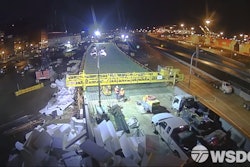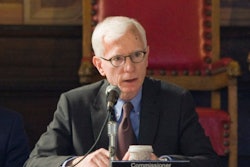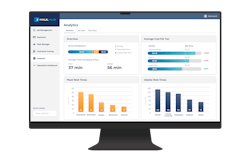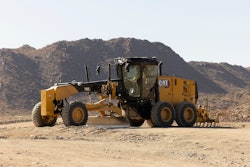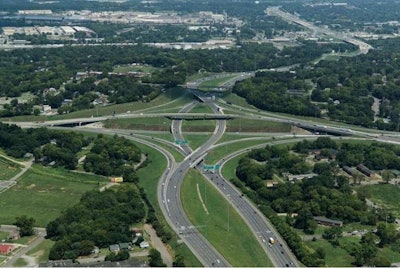
Thirty percent of major roads and highways in Alabama are in poor or mediocre condition—and there’s not enough funding to address the worsening problems, a research organization is reporting this week.
Driving on rough roads costs the average Alabama driver $507 annually in additional vehicle operating costs—a total of $2 billion statewide. That’s according to TRIP, a Washington, DC-based national nonprofit transportation research organization.
The report comes as lawmakers are poised to focus, as a priority, on the debate over an increase in the gas tax, last raised in 1992.
Bridges need work, too, but engineers don’t have enough money to address the needs.
The researchers note that “7 percent of Alabama’s bridges are structurally deficient, meaning there is significant deterioration of the bridge deck, supports or other major components.”
Most bridges, the report says, are designed to last 50 years before major overhaul or replacement, although many newer bridges are being designed to last 75 years or longer. In Alabama, 49 percent of the state’s bridges were built in 1969 or earlier. The researchers looked at bridges 20 feet or longer.
The TRIP chart below details bridge conditions statewide and in the state’s largest urban areas.
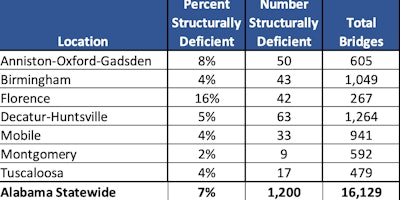 TRIP analysis of FWHA 2017 Bridge Inventory.
TRIP analysis of FWHA 2017 Bridge Inventory.Lack of funds, no gas tax hike for 27 years
Inflation and increased fuel economy have decreased the ability of the Alabama’s fuel tax revenue to provide for the needs of a transportation system that is carrying significantly more vehicle travel and experiencing increased wear and tear and added congestion as a result, the report says.
Alabama’s fuel tax was last raised in 1992. Only eight other states have gone as long without an increase, TRIP says.
“Revenue from the state’s 18 cent-per-gallon fuel tax has not kept pace with inflation. When adjusted for inflation, Alabama collects half of what it did in the early 1990s,” the report points out.
“In 1992, when the state’s fuel tax was last raised, the yield of per-gallon fuel taxes per 100 miles driven was $1.06, but declined to $0.53 in 2016 when adjusted for inflation.”
This week, Alabama Gov. Kay Ivey proposed a 10-cent increase to the gas tax. The increase would be phased in over three years, the Associated Press reports, and would bring in $320 million each year that would “almost entirely” go to road and bridge projects.
An increasingly large share of ALDOT’s budget has been devoted to preserving the existing system of roads and bridges. And that’s leaving only $150 million available each year for new projects that would address worsening congestion or expand the system to accommodate population and travel growth and promote economic development, researchers say.
ALDOT and communities around the state have identified major transportation projects across Alabama that would help to ease congestion and create economic development opportunities.
These projects include the 53-mile Northern Beltline around Birmingham; more than $1 billion in identified expansion needs in Huntsville; a new Mobile Bay Bridge and Bayway; an outer highway loop for Montgomery; Tuscaloosa’s Eastern Bypass; a bypass around Dothan; and, an extension of I-85 across West Alabama.
At least an additional $10 billion in large-scale projects have been identified, but only $150 million a year will be available, TRIP stresses.
A 2019 report by the University of Alabama’s Alabama Transportation Institute and Alabama Transportation Policy Research Center found that, through 2040, Alabama should be spending a minimum of $600 million annually on additional roadway capacity to allow the state to be 16 economically competitive.
“An annual investment of $800 million in additional roadway capacity would optimize Alabama’s economic opportunities,” the report says.
“Through ATRIP (the Alabama Transportation Rehabilitation and Improvement Program), first introduced in 2012 and enacted in 2013, the state secured more than $1.3 billion in borrowed dollars to address needed improvements that would not have been possible with the available revenue.
“However, the state will see a significant drop in available transportation funding now that the borrowing authority has been exhausted and the state must devote additional funds to repaying the debt.
“The use of approximately $200 million annually in ATRIP funds, which concluded in 2017, as well as additional debt incurred to finance the reconstruction of the elevated interstate and bridges in Birmingham’s Central Business District, has resulted in the state’s annual highway debt service increasing to $114 million in 2018, a level it will stay at for the next 19 years, the report elaborates.
“This annual level of state highway debt service is up from $13.6 million in 2011.
The federal government is a critical source of funding for Alabama’s roads, highways, bridges and transit systems and provides a significant return in road and bridge funding based on the revenue generated in the state by the federal motor fuel tax.
“Most federal funds for highway and transit improvements in Alabama are provided by federal highway user fees, largely an 18.4 cents-per-gallon tax on gasoline and a 24.4 cents-per-gallon tax on diesel fuel,” the report states.
Federal Highway Fund shortfall
But since 2008, revenue into the federal Highway Trust Fund has been inadequate to support legislatively set funding levels so Congress has transferred approximately $53 billion in general funds and an additional $2 repairs and improvements to the nation’s roads, highways and bridges.
The USDOT report found that the nation’s current $105 billion investment in roads, highways and bridges by all levels of government should be increased by 35 percent to $142.5 billion annually to improve the conditions of roads, highways and bridges, relieve traffic congestion and improve traffic safety, TRIP says.
To read the full report, click here.

